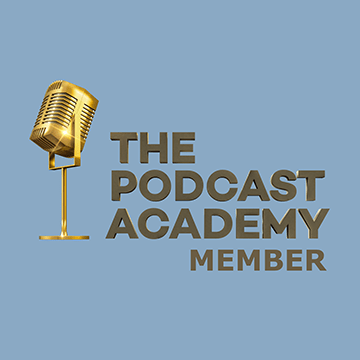Transcript
Hi there! Thank you for coming back to check out the Business Infrastructure Podcast – the show where we share operational tips, tactics, and strategies to help you cure any back-office blues you might be experiencing.
This season features a growth strategies masterclass. In the last episode, you heard our second lesson in preparing for your company’s growth strategy. We learned about the X-matrix as a tool for linking strategy with execution. In this episode, you’ll get a glimpse of how we used it to make sure our idea for an online course doesn’t just remain an idea, but actually becomes a reality.
This is Ep. 289: How We Used the X-Matrix to Create a Strategy for Our Online Course

Before I open the X-matrix, let me give a quick recap of where we are at this point in the growth strategies masterclass. If you’re new to the show, welcome, I’m Alicia Butler Pierre, Founder and CEO of Equilibria, which is the underwriter of the business infrastructure podcast.
As each expert comes onto the show to share a specific tool for creating a growth strategy, I follow up with a monologue sharing how we applied that tool at Equilibria. At this point in the masterclass, we’ve used the Lean Canvas to test our idea for an online course. What we found was that although our Business Infrastructure course had lackluster sales, potential customers we interviewed were very interested in a process mapping course.
From a timeline perspective, this was late Dec. 2023. I should tell you that I’m already an instructor where I teach Lean Principles at a prominent University here in the U.S. Fast-forward to the first week of January, 2024. You know how people talk about New Year’s resolutions and their theme for the year?
Well, my theme or word for the year is “partnerships.” It also dawned on me that although people expressed a strong interest in a process mapping course, there is already a market for a course that is a natural lead for a process mapping course.
And that course is Lean Six Sigma. Now, if you don’t know what that is, to keep things simple, it’s a framework for reducing waste and errors while maximizing quality and value for customers. And you know what else? Not only is Lean Six Sigma a natural lead in to a future process mapping course, but it’s also a lead in for the business infrastructure course we already have in place! Talk about a lightbulb or Eureka! Moment. And its this very epiphany that led me to reach out to Kenya Moses, the X-matrix expert you heard in the last episode, and ask for his help.

So now I’ll give you all a glimpse of what he helped us with…
Okay, as you can see, I am now sharing an X-matrix on my screen. I apologize that it’s a little small. I’m working on my smaller surface book laptop. But bear with me as I explain at a really high level what our X-matrix looks like. As a reminder, you can go to YouTube to watch the video version of this episode so that you can see this.
Some of you may already be on YouTube, but for those of you who are only listening to the podcast audio, just know that you can go to YouTube to actually be able to see if you can the XMatrix that I am now showing on the screen. This again is a snapshot of what we did with our work with Kenya Moses. It’s not the entire X-Matrix, and that is intentional because there’s frankly some information that we don’t want to disclose for confidentiality and proprietary reasons. But, but I promise you will see enough to be able to get the gist of how to actually complete one. This is a Microsoft Excel document, and you can actually download this template that I’m showing here from the show notes at Businessinfrastructure.TV.
As you can see, there is a large X. You’ll notice there’s a gray square right almost in the center of the entire matrix. And there’s an X going across. There are four main positions, if you will, around this X. These are the clock positions that you heard Kenya Moses actually describe in the previous episode.

We’ll start here in the 06:00 position. I had to think about that for a minute. But yes, this is the 06:00 position. And this is the position where you actually start to fill out the X-matrix. And the idea is that you start at the 06:00 position and you start to move about the X in a clockwise fashion.
So you start here with your three to five-year breakthrough objectives. So for us, we specifically put the year 2026 because the year right now is 2024, and three years from now we will actually be in the year 2026. And we simply started to list the different goals or breakthrough objectives that we have that are longer term. As we move clockwise into the 09:00 position on the X-matrix, you can see here where you translate your break, your longer term, three to five-year breakthrough objectives into annual breakthrough objectives. So again, if there is something that you have identified that is a longer term, three-year, five-year goal, what can you do within the existing year (for us 2024) to make sure that you are working toward the achievement of that overall long-term goal?
As we move up again in the clockwise position, we are now in the 12:00 noon position. These are top level improvement priorities. In other words, I like to think of these as projects. What are the specific things that you can do within the current year to actually make sure that you accomplish those annual breakthrough objectives? And then finally, I shouldn’t say finally, but the last true position along the X-matrix itself and the 03:00 position are targets to improve.
Again, this is on an annual basis, so that is where you want to be as specific as you possibly can be. Now I will move over to the right of the X-matrix, and this is where we start to list our resources. Who will be primarily responsible for the different top level improvement priorities that you identify versus who might have secondary responsibility. And there are these different circles, and I’ll get to that in just a moment. But I wanted to make sure that I talked about the entire matrix.

Overall, when you’re filling out the X-matrix, I like to think of it as a funnel because as you start with your three to five-year breakthrough objectives, you’re very high level. You’re specific, but it’s still high level. But as you start to go around the X-matrix, filling in even more information, you’re starting to drill down into the details. So you’ll notice that I also have some areas highlighted in yellow.
Let me explain why. These are the areas that I really want to focus on because it relates specifically to the online course idea. So let’s start here. In the 06:00 position, we have three different rows underneath the section called three to five-year breakthrough objectives. The first one says, increase top line revenue from X3 to Y3 dollars.
We actually do know those numbers. We just aren’t disclosing it for confidentiality purposes. The second breakthrough objective that we have here is transitioning the business model to 100% training. Right now, at Equilibria, our business model is 100% consulting.
And then a third breakthrough objective, excuse me, that’s longer term, is to ultimately sell the business. That is the goal, is that in three years, by the year 2026, which isn’t that far away, that we will actually, in fact, sell the business. And there are some specific things that we need to start doing now in 2024 to make sure that’s possible. Now, you’ll also notice that as I start to move about the X-matrix again in a clockwise position, I’m now at the 09:00 position. If we look at the longer term breakthrough objective, that’s transition business model to 100% training.
This is what we’re ultimately going to link the online course idea to. This is how we’re literally plotting that vetted and validated idea for an online course into the company’s overall growth strategy. Just stay with me for a second here. I’m only going to focus on the two areas in the annual policy breakthrough objectives section in the 09:00 position, because it directly correlates to the longer term objective to transition the business model to 100% training. So obviously that’s not something that can happen within the year, but what we can do within the year.
A goal of ours is to transition the business model to 75% consulting, 25% training.
So in other words, we’re going from top of the year, having a 100% consulting business model, to by the end of 2024 December, we will go from 100% consulting to about 75% consulting, 25% training. And another key annual objective that we want to have in place is to develop key strategic partnerships. If you’ll recall, earlier in this episode, I mentioned that my word for this year is “partnerships” because we recognize that there are other people in that space that have the ability to bring us business that we would. It would take us a really long time to try to develop some of those relationships on our own. You’ll also notice that there are some circles here.

These dark circles that you see actually show the correlation between two different sections at any given moment. Along the X-matrix, for example, there is a circle that is connecting transition business model to 100% training as a long, term goal, with transition the business model to 75% consulting, 25% training. These circles again show the correlation is literally showing us how everything is aligned along this X-matrix. So in other words, you should never have anything on your X-matrix that cannot be directly correlated to something else that is on your X-matrix. I’ll now move on to the 12:00 noon position.
Our top level improvement priorities. Again, I like to think of these as high level projects, if you will. So I’ll just focus on the things that we have highlighted in yellow because, again, that speaks specifically to the online course idea. One of those top level improvement priorities is to partner with federal government and corporate lead sources. So again, those are the partners that I just
spoke about.
We also have an idea to take one of the seasons from the business Infrastructure podcast and launch it as a standalone show, because it in fact is a demonstration of our ability to provide training in the form of a podcast and then finally build a tiered training program for classroom and online instructions. So these are very specific, targeted things that we have to do in order to meet our annual objectives for 2024.
Okay, so now that we have talked about the top level improvement priorities, or projects, as I like to refer to it, we can start to look at the targets to improve. But before we go there, let’s move across all the way to the far right of this diagram. We’re actually outside of the X, if you will, or maybe you can think of it as an extension of the X. Also in the 03:00 position.
This is where. I have initials here, but typically you would put people’s names. Who is actually going to be responsible for those different top level improvement priorities? So I have some initials of myself, some people on the team, and also some of the key strategic partners that we are actively in the process of formalizing our business relationships. But you’ll notice there are some circles that are completely filled and other circles that are not filled.
In other words, the completely filled, in totally black circles represents primary responsibility. And those where you only see a circle but it’s not filled or shaded in, represents secondary responsibility. And all that’s saying is for every single one of those top level improvement priorities, who ultimately has the primary responsibility? So again, I have myself in here, and there are some moments or instances where you might have people who are both primarily responsible and those who you may identify as having secondary responsibility. I’ll go back over toward the left, also in the 03:00 position along the X-matrix.

And this is the final section to complete, which is the targets to improve. This is where you want to, again, get even more specific. How are you going to measure success? You can also think of these as KPI’s or Key Performance Indicators. Again, focusing on those that I have highlighted in yellow because they specifically tie into this online course idea.
Two of them. Win one corporate training contract by the third quarter of 2024. Win one federal government training contract by the end of the third quarter of 2024. So again, those are very specific. It’s actually time based, it’s relevant.
It’s following that S.M.A.R.T. model, which is Specific, Measurable, Achievable, Relevant and Time-based. And we’ll learn a little bit more about that as we drill down into the action plans. And speaking of action plans, you’ll notice here at the very bottom of this file, you’ll notice that there are three tabs. One is called the top level matrix, which is the X-matrix itself. And then there’s the course action plan, which is another tab, and an organizational level targets to improve list.
Those are the details that we’re about to drill into those other two tabs, the action plan and those targets to improve listing. That’s actually what we’re going to cover in great detail in the next episode, because not only are we going to talk about what we’re going to do, but we’re going to get very specific into how we actually do it. Now, just to give you an idea of how long it took us to work on this X-matrix, this is something that we started here at Equilibria the first week of January this year, 2024, with Kenya Moses, and it took us four different one-hour sessions. We were doing things a combination of Zoom and Microsoft Teams, if I recall. Lots of great conversations.
So it’s not that it should normally take that long, as Kenya mentioned. You know, Kenya said, it really depends on the extent of the conversations. But for us, it was our first time formally doing it for our company, so we really wanted to make sure we gave it a really good first try. And again, lots of great conversations that came about as a result.
Now, that time that I just shared with you did not include the time that it took for us to build the action plans. That’s again where we’re going to drill down into even more details. We’ll specifically identify the tasks that are needed to accomplish the goals that you see here on this X-matrix. And how you do that is what we’ll cover in the next episode of this growth strategies masterclass.
Thank you for listening! Visit BusinessInfrastructure.TV to download your free copy of an X-matrix template and to watch the video version of this episode. Again that’s BusinessInfrastructure.TV.
If you enjoyed being a part of this journey, then please subscribe to the show, give us a five-star rating and…we’d love it if you left us a review.

Good luck in completing your X-matrix. I highly recommend you reach out to Kenya Moses if you need help with facilitating a session for you, training you and your team, or even some coaching so that you can build the capabilities in house. His contact information is available in this episode’s show notes.
Now it’s time to take our X-matrix and build action plans to make sure we actually accomplish the goals we’ve set. You’ll learn how to do that in the next episode.
Be sure to come back to the place wherever you’re listening so you don’t miss it! Until then, remember to stay focused and be encouraged. This entrepreneurial journey is a marathon and not a sprint.
This podcast episode was written and produced by me, Alicia Butler Pierre. Audio editing and sound design by Sabor! Music Enterprises. Video editing by Gladiola Films. A special thank you to the team here at Equilibria, Inc., and to Grant Revilla for creating the show notes.
This is the Business Infrastructure – Curing Back-Office Blues podcast
















